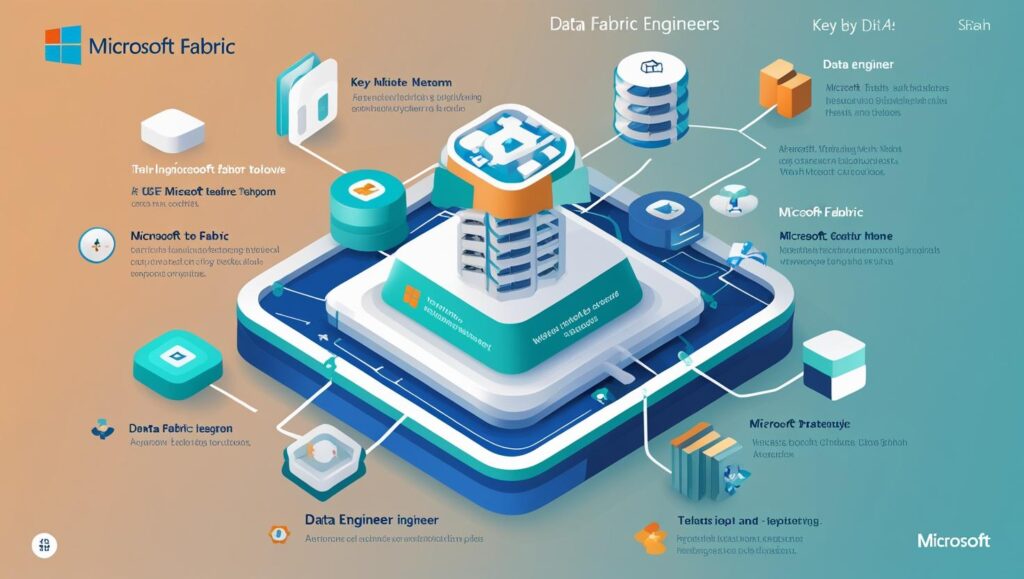
1. **OneLake:** The core data lake storage layer in Microsoft Fabric, serving as the centralized source of truth across the platform.
2. **Lakehouse:** A unique architecture within Fabric that merges the advantages of data lakes and data warehouses, enabling analysis of both structured and unstructured data.
3. **Warehouse:** A meticulously managed, scalable, SQL-based data warehousing solution in Microsoft Fabric, tailored for high-speed analytics.
4. **Notebook:** An interactive workspace in Fabric supporting various coding languages like PySpark, SQL, and markdown for seamless data exploration and manipulation.
5. **Dataflow Gen2:** A user-friendly ETL tool in Fabric, requiring minimal coding, to effortlessly ingest, transform, and load data through an intuitive graphical interface.
6. **Power BI:** The integrated reporting and visualization tool in Microsoft Fabric, empowering users to create real-time data dashboards and reports effortlessly.
7. **Semantic Model:** A pivotal layer in Fabric where business rules and key performance indicators (KPIs) are established, ensuring consistent data analysis across tools like Power BI.
8. **Pipeline:** An essential data orchestration feature in Fabric for scheduling and overseeing data workflows and ETL operations efficiently.
9. **Data Activator:** A cutting-edge preview feature in Fabric that monitors real-time data and triggers alerts or actions automatically based on predefined criteria.
10. **Capacity:** Referring to the allocated compute and storage resources within a Microsoft Fabric workspace, typically determined by the F SKU (e.g., F2, F4) to optimize performance scalability.
